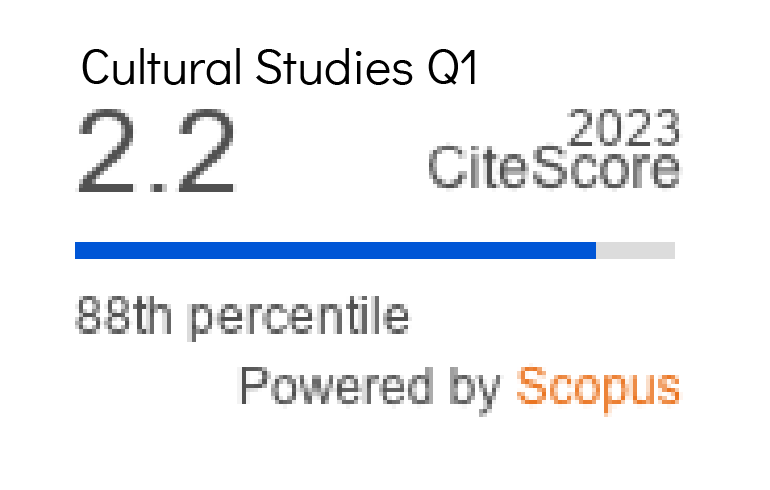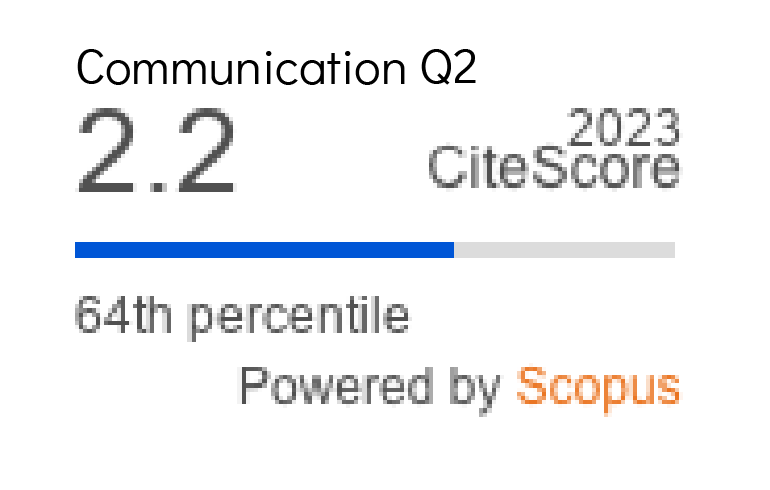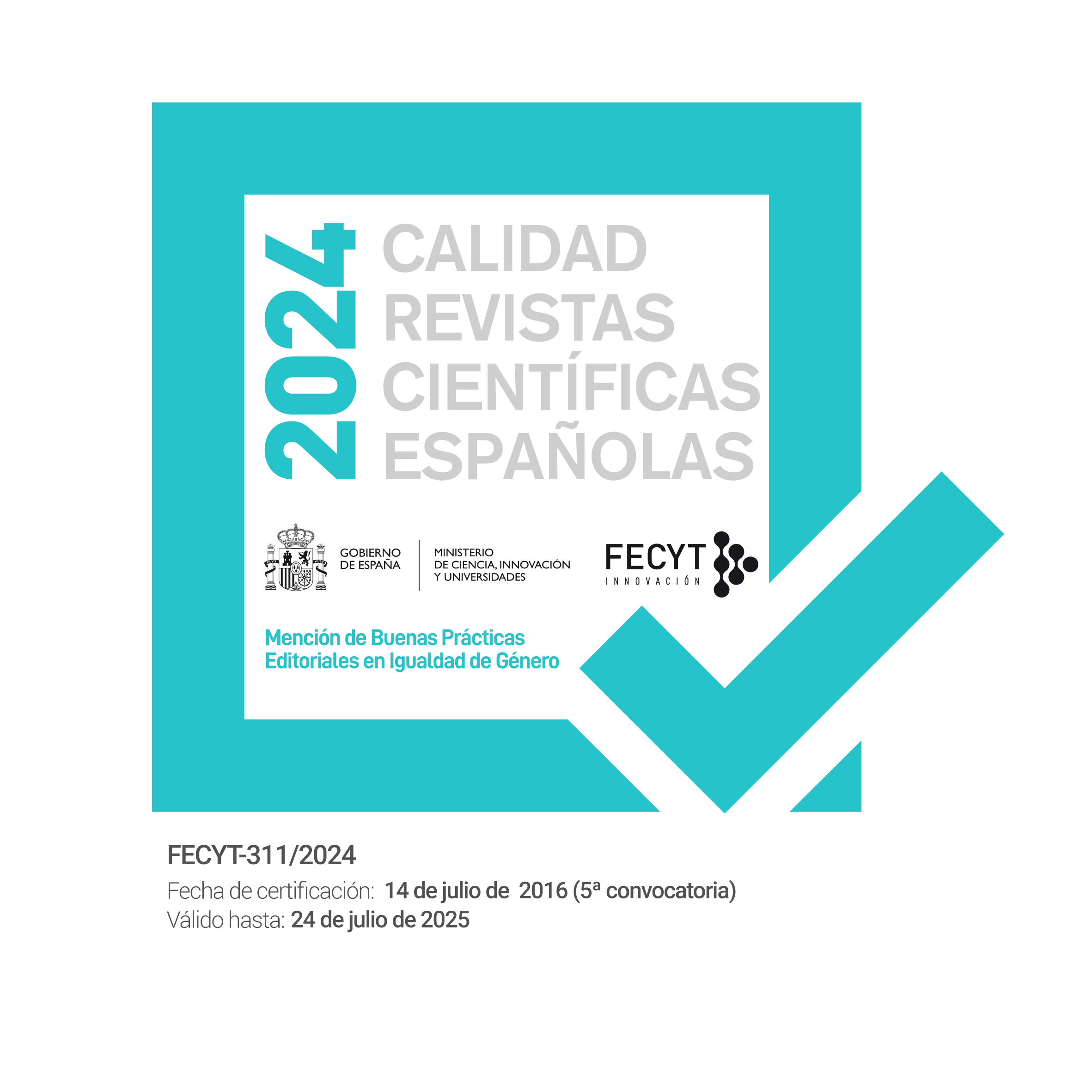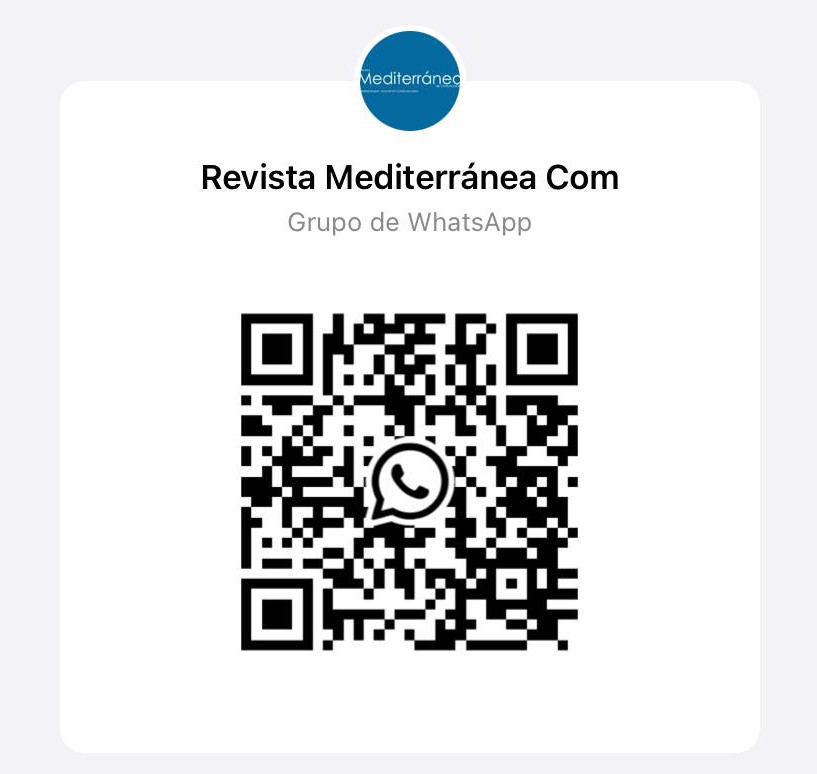Another brick in the whole: estrategias de adaptación, remediación y transmediación en LEGO Batman: La Película
DOI:
https://doi.org/10.14198/MEDCOM2018.9.1.13Palabras clave:
Adaptación, Batman, LEGO, Narrativa transmedia, Remediación, Transmedia brandResumen
El estreno en 2014 de La Lego Película (The Lego Movie, Phil Lord y Chris Miller) supuso un importante hito en la historia de la empresa danesa LEGO, erigiendo el filme como pieza clave de la estrategia transmediática que empezaba a tomar forma en el ámbito cinematográfico. Aquel filme, en el que el personaje de Batman gozaba de un especial protagonismo, ha dado paso a un particular spin-off que, bajo el título LEGO Batman: La Película (The LEGO Batman Movie, Chris McKay, 2017), repite algunas de las fórmulas puestas en práctica en La Lego Película e introduce otras nuevas de igual o mayor interés desde un punto de vista intertextual. Este artículo se aproxima al largometraje del superhéroe de DC Comics atendiendo a las particulares estrategias de adaptación, remediación y transmediación que lleva a cabo. A través del análisis de los componentes narrativos que constituyen la propuesta del filme, así como de su puesta en relación con los presentes en los textos impresos, audiovisuales y videolúdicos pertenecientes a la franquicia LEGO Batman, se estudian las distintas estrategias que posibilitan la interconexión entre ellos y moldean el ‘macrorrelato’ (Scolari, 2009) que, de manera paradigmática, toma forma en la narrativa transmediática resultante.
Citas
Adams, P. C. & Jansson, A. (2012). Communication geography: A bridge between disciplines. Communication Theory, 22(3), 299–318. Disponible en https://goo.gl/ksqKba. http://dx.doi.org/10.1111/ j.1468-2885.2012.01406.x
Aldred, J. (2014). (Un) blocking the Transmedial Character: Digital Abstraction as Franchise Strategy in Traveller’s Tales LEGO Games. En M. J. Wolf (Ed.), LEGO Studies: Examining the Building Blocks of a Transmedial Phenomenon (pp. 105-117). New York: Routledge.
Arnott, L. (2016). Arkham Epic: Batman Video Games as Totalizing Texts. En C. Duret & C. M. Pons (Eds.), Contemporary Research on Intertextuality in Video Games (pp. 1-21). Philadelphia: IGI Global. https://doi.org/10.4018/978-1-5225-0477-1.ch001
Aubrun, F. & Lifschutz, V. (2017). Le traitement médiagénique de Batman: Des franchises au transmedia storytelling. Communication, 34(2). https://doi.org/10.4000/communication.7376
Barrios, A. y Zambrano, W. R. (2014). Formación de comunicadores ‘transmedia’ para el público de la generación digital. index.comunicación, 4(1), 13-36. Disponible en https://goo.gl/6cHaNn
Beaty, B. (2011). Introduction. Cinema Journal, 50(3), 106-110. https://doi.org/10.1353/cj.2011.0022
Bernardo, N. (2011). The producer’s guide to transmedia. How to develop, fund, produce and distribute compelling stories across multiple platforms. Lisboa: beActive.
Bertetti, P. (2014). Toward a Typology of Transmedia Characters. International Journal of Communication, 8, 2344–2361. Disponible en https://goo.gl/KKrJQH. http://dx.doi.org/1932–8036/20140005
Bolter, J. & Grusin, R. (1999). Remediation. Understanding New Media. Massachusetts: MIT Press.
Bourdaa, M. (2013). ‘Following the pattern’: the creation of an encyclopaedic universe with transmedia storytelling. Adaptation, 6(2), 202-214. https://doi.org/10.1093/adaptation/apt009
Brooker, W. (2000). Batman Unmasked. London: Continuum.
Brooker, W. (2012). Hunting the dark knight: Twenty-first century Batman. London: Tauris.
Brownlee, S. (2016). Amateurism and the Aesthetics of Lego Stop-Motion on YouTube. Film Criticism, 40(2). http://dx.doi.org/10.3998/fc.13761232.0040.204
Davidson, D. (2010). Cross-media communications: An Introduction to the art of Creating Integrated Media Experiences. Pittsburgh: ETC Press.
Dena, C. (2010). Transmedia practice: Theorising the practice of expressing a fictional world across distinct media and environments. University of Sydney: Australia.
Dena, C. (2014). Transmedial Fiction. In M. L. Ryan; L. Emerson & B. J. Robertson (Eds.), The Johns Hopkins guide to digital media. (pp. 486-489). Baltimore: JHU Press.
Dixon, W. W. & Graham, R. (2017). The DC Universe. In W. W. Dixon & R. Graham (Eds.), A Brief History of Comic Book Movies (pp. 15-28). Cham: Palgrave Macmillan. https://doi.org/10.1007/978-3-319-47184-6_2
Durand, K. K. (2011). Batman's Canon Hybridity and the Interpretation of the Superhero. In K. K. Durand & M. K. Leigh (Eds.), Riddle Me This, Batman!: Essays on the Universe of the Dark Knight. Jefferson: McFarland.
Flanagan, M.; Livingstone, A. & McKenny, M. (2016). The Marvel Studios Phenomenon: Inside a Transmedia Universe. New York: Bloomsbury.
Freeman, M. (2014a). Advertising the yellow brick road: historicizing the industrial emergence of transmedia storytelling. International Journal of Communication, 8, 2362-2381. Disponible en https://goo.gl/hLVdME
Freeman, M. (2014b). Transmediating Tim Burton’s Gotham City: Brand Convergence, Child Audiences, and ‘Batman: The Animated Series’. Networking Knowledge: Journal of the MeCCSA Postgraduate Network, 7(1). Disponible en https://goo.gl/CgR5yN
García-García, F.; Gértrudix-Barrio, M. y Gértrudix-Barrio, F. (2014). Análisis de la incidencia de la dieta de servicios digitales en la utilidad y confianza de la información en Internet en los jóvenes universitarios. Comunicación y Sociedad, 27(1), 59-81. Disponible en https://goo.gl/j5MJ4r
Garrido, P. & Estupiñán, Ó. (2016). Analysis of character construction in transmedia advertising narrative. Revista Prisma Social, 17, 140-161. Disponible en https://goo.gl/Cz7hd7
Gray, J. (2010). Show sold separately: Promos, spoilers, and other media paratexts. New York: New York University Press.
Guerrero-Pico, M. y Scolari, C.A. (2016). Narrativas transmedia y contenidos generados por los usuarios: el caso de los crossovers. Cuadernos.info, (38), 183-200. https://doi.org/10.7764/cdi.38.760
Harvey, C. (2015). Fantastic transmedia: Narrative, play and memory across science fiction and fantasy storyworlds. New York: Palgrave MacMillan. https://doi.org/10.1057/9781137306043
Hills, M. (2012). Torchwood’s trans-transmedia: media tie-ins and brand ‘fanagement’. Participations, 9(2), 409-428.
Hills, M. (2016). LEGO Dimensions meets Doctor Who: Transbranding and New Dimensions of Transmedia Storytelling? Icono 14, 14(1), 8-29. https://doi.org/10.7195/ri14.v14i1.942
Hjarvard, S. (2013). The mediatization of culture and society. New York: Routledge.
Hunter, D. & Thomas, J. (2017). Lego's system of play meets intellectual property: from the engineered object to digital media. In M. Richardson & S. Ricketson (Eds.), Research Handbook on Intellectual Property in Media and Entertainment. (pp. 317-343). Cheltenham: Edward Elgar. https://doi.org/10.4337/9781784710798.00020
Hutcheon, L. (2006). A theory of adaptation. New York: Routledge.
Ioannidou, E. (2013). Adapting superhero comics for the big screen: Subculture for the masses. Adaptation, 6(2), 230-238. https://doi.org/10.1093/adaptation/apt004
Islas-Carmona, J. O. (2008). El prosumidor. El actor comunicativo de la sociedad de la ubicuidad. Palabra Clave, 11(1), 29-39. Disponible en https://goo.gl/k9vL9N
Jeffries, D. H. (2009). Convergence Culture and the Caped Crusader: Batman and the Environment of New Media. CineAction, (77), 42-49. Disponible en https://goo.gl/JQv6MZ
Jenkins, H. (2006). Convergence culture: Where old and new media collide. New York: New York University Press.
Jenkins, H. (12/12/2009). The Revenge of the Origami Unicorn: Seven Principles of Transmedia Storytelling [Blog]. Disponible en https://goo.gl/DJxrXS
Jenkins, H. (12/12/2009). The Revenge of the Origami Unicorn: The Remaining Four Principles of Transmedia Storytelling [Blog]. Disponible en https://goo.gl/L5iy4A
Klastrup, L. & Tosca, S. (2004). Transmedial worlds-rethinking cyberworld design. En International Conference on Cyberworlds (pp. 409- 416). Tokyo, Japan: IEEE. https://doi.org/10.1109/CW.2004.67
Klein, M. & Parker, G. (1981). The English novel and the movies. New York: Frederick Ungar.
Lauwaert, M. (2009). The place of play: Toys and digital cultures. Amsterdam: Amsterdam University Press.
Long, G. (2007). Transmedia Storytelling. Business, Aesthetics and Production at the Jim Henson Company. Faculty of Media Studies, Massachusetts Institute of Technology, Estados Unidos. Disponible en https://goo.gl/byjHYj
Long, G. (2016). Creating worlds in which to play: using transmedia aesthetics to grow stories into storyworlds. En B. Kurtz & M. Bourdaa (Eds.), The Rise of Transtexts: Challenges and Opportunities. Oxon: Routledge.
McMahan, A. (2005). The Films of Tim Burton: Animating Live Action in Contemporary Hollywood. London: Continuum.
Mora-Fernández, J. I. (2017). Elementos narrativos que sirven para generar convergencias e inteligibilidad en narrativas transmediáticas o narrativas interactivas lineales. Icono 14, 15(1), 186-210. https://doi.org/10.7195/ri14.v15i1.1032
Ndalianis, A. (2011). Why comics studies? Cinema Journal, 50(3), 113-117. Disponible en https://goo.gl/mbcYYm
Parody, C. (2011). Franchising/adaptation. Adaptation, 4(2), 210-218. https://doi.org/10.1093/adaptation/apr008
Pearson, R. & Uricchio, W. (Eds.) (1991). The many lives of The Batman: Critical Approaches to a Superhero and His Media. New York: Routledge.
Pearson, R.; Uricchio, W. & Brooker, W. (Eds.) (2015). Many more lives of The Batman. New York: Palgrave Macmillan.
Proctor, W. (2013). Dark Knight Triumphant: Fandom, Hegemony and the Rebirth of Batman on Film. In L. Burke (Ed.), Fan Phenomena: Batman (pp. 155-164). London: Intellect.
Ruggill, J. E. (2009). Convergence: Always already, already. Cinema Journal, 48(3), 105-110. https://doi.org/10.1353/cj.0.0120
Ryan, M. L. (2013). Transmedial storytelling and transfictionality. Poetics Today, 34(3), 361-388. https://doi.org/10.1215/03335372-2325250
Ryan, M. L. (2014). Story/Worlds/Media. Tuning the Instruments of a Media-Conscious Narratology. In M. L. RYAN & J. N. THON (Eds.), Storyworlds across Media. Toward a Media-Conscious Narratology. (pp. 25-49). Lincoln: University of Nebraska Press. https://doi.org/10.2307/j.ctt1d9nkdg.6
Santo, A. (2015). Selling the Silver Bullet: The Lone Ranger and Transmedia Brand Licensing. Austin: University of Texas Press.
Scolari, C. A. (2009). Transmedia Storytelling: Implicit Consumers, Narrative Worlds, and Branding in Contemporary Media Production. International Journal of Communication, 3, 586-606. Disponible en https://goo.gl/aWNYRA
Scolari, C.A. (2013). Narrativas transmedia: cuando todos los medios cuentan. Barcelona: Deusto.
Sinervo, K. (2016). Gotham on the ground: Transmedia meets topography in the environments of the Arkham videogame series. Wide Screen, 6(1), 1-26. Disponible en https://goo.gl/jq89dw
Smith, A. (2009). Transmedia storytelling in Television 2.0. Strategies for developing narratives across Media Platforms. Middlebury College, Vermont.
Thon, J. N. (2016). Transmedial Narratology and Contemporary Media Culture. Lincoln: University of Nebraska Press. https://doi.org/10.2307/j.ctt1d8h8vn
Wainer, A. M. (2014). Soul of the Dark Knight: Batman as Mythic Figure in Comics and Film. Jefferson: McFarland.
Weaver, T. (2013). Comics for film, games, and animation: using comics to construct your transmedia storyworld. Massachusetts: Focal Press.
Wolf, M. J. (Ed.) (2014). LEGO Studies: Examining the Building Blocks of a Transmedial Phenomenon. New York: Routledge
Wooten, D. (2013). How Lego constructs a cross-promotional franchise with video games. The University of Wisconsin-Milwaukee. Disponible en https://goo.gl/FYcYV4
Yockey, M. (Ed.) (2017). Make Ours Marvel: Media Convergence and a Comics Universe. Texas: University of Texas Press.
Descargas
Estadísticas
Publicado
Cómo citar
Número
Sección
Licencia
Derechos de autor 2018 Sergio Albaladejo-Ortega, Josefina Sánchez-Martínez

Esta obra está bajo una licencia internacional Creative Commons Atribución-CompartirIgual 4.0.
Los autores y autoras que publican en esta revista están de acuerdo con los siguientes términos:
1 Derechos de autor. Los autores y autoras conservan sus derechos de autor, aunque ceden a la revista de forma no exclusiva los derechos de explotación (reproducción, distribución, comunicación pública y transformación) y garantizan a esta el derecho de primera publicación de su trabajo, el cual estará simultáneamente sujeto a la licencia indicada en punto 2. Los autores pueden establecer otros acuerdos adicionales para la distribución no exclusiva de la versión de la obra publicada en la revista, siempre que exista un reconocimiento de su publicación inicial en esta revista.
© Los autores.
2 Licencia. Los trabajos se publican en la revista sujetos a la licencia de Reconocimiento 4.0 Internacional de Creative Commons (CC BY 4.0); los términos se pueden consultar en https://creativecommons.org/licenses/by/4.0/
Esta licencia permite a terceros compartir (copiar y redistribuir el material en cualquier medio o formato) y adaptar (remezclar, transformar y crear a partir del material para cualquier finalidad, incluso comercial), siempre que se reconozca la autoría y la primera publicación en esta revista (Revista Mediterránea de Comunicación (RMC) / Mediterranean Journal of Communication (MJC), Universidad de Alicante, DOI de la obra), se proporcione un enlace a la licencia y se indique si se han realizado cambios en la obra.
3 Política de autoarchivo. Se recomienda a los autores que difundan sus trabajos a través de Internet para favorecer una circulación y difusión más rápidas y, con ello, un posible aumento en la citación y alcance entre la comunidad científica y académica, en las siguientes condiciones:
No se permite a los autores depositar en un repositorio institucional o temático, página web propia, etc., las versiones preprint (versión antes de ser evaluada) o postprint (versión evaluada y aceptada para su publicación) de sus trabajos antes de su publicación, pero sí el artículo final publicado (versión del editor).












